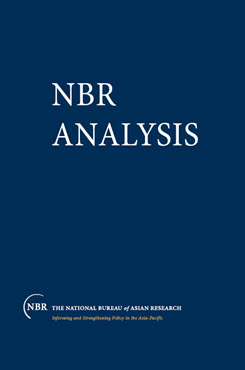South Korea's Reactions to China's "Peaceful Development"
If there are countries toward which China has not needed a “charm offensive,” South Korea would certainly be one of them. Over the years many observers were curious about the pace at which South Korea implemented rapprochement with China even before the end of the Cold War.
If there are countries toward which China has not needed a “charm offensive,” South Korea would certainly be one of them. Over the years many observers were curious about the pace at which South Korea implemented rapprochement with China even before the end of the Cold War. Throughout the 1980s views of China as a potential threat were rare in South Korea. During the 1990s South Korea never regarded China as an imminent threat—in contrast with Japan, which officially listed China as a potential threat. The South Korean Ministry of National Defense’s white papers have devoted only four to five pages to outlining China’s military modernization and inter-military exchanges, underlining the lack of concern within South Korea’s security establishments. [1]
The fast-growing interdependence between Seoul and Beijing provided additional cement for closer ties between South Korea and China. Two-way trade increased 628 times in 26 years, making China South Korea’s top trading partner and the biggest source of South Korea’s trade surpluses. The annual growth rate of bilateral trade was nearly 30% during 1992–2006. Investment is another pillar of this interdependent relationship between Seoul and Beijing. In 2004 South Korea’s cumulative investment in China ($17.9 billion) outpaced the country’s investment in the United States ($17.1 billion) for the first time. The number of visitors between South Korea and China also surged from 9,000 in 1988 to over 4.8 million in 2006, surpassing the number of visitors between the United States and South Korea. “China” has become a household word in South Korea.
The “rise” of China is acutely felt in almost every area, ranging from agriculture and fisheries to the automobile and shipbuilding industries. Under the Roh Moohyun administration, debates were even waged over whether China could constitute a “strategic supplement” to South Korea’s alliance with the United States. In deference to China Seoul has refrained from inviting the Dalai Lama to visit the country—the only democratic government in East Asia to do so. Seoul also took issue with the “strategic flexibility” of U.S. forces stationed in South Korea out of consideration for the adverse implications such flexibility might have for relations with China. [2]
On the surface it may seem as if certain historically induced positive sentiments are working to draw South Korea increasingly closer to China. South Korea’s favorable views of China, however, may also be construed as “wishful expectations,” driven partly by South Korea’s inherent instincts…
[1] Jae Ho Chung, “Dragon in the Eyes of South Korea: Analyzing Evolving Perceptions of China,” in Korea: The East Asian Pivot, ed. Jonathan D. Pollack (Newport: Naval War College Press, 2006), 258–60.
[2] Jae Ho Chung, Between Ally and Partner: Korea-China Relations and the United States (New York: Columbia University Press, 2007), chap. 8.


